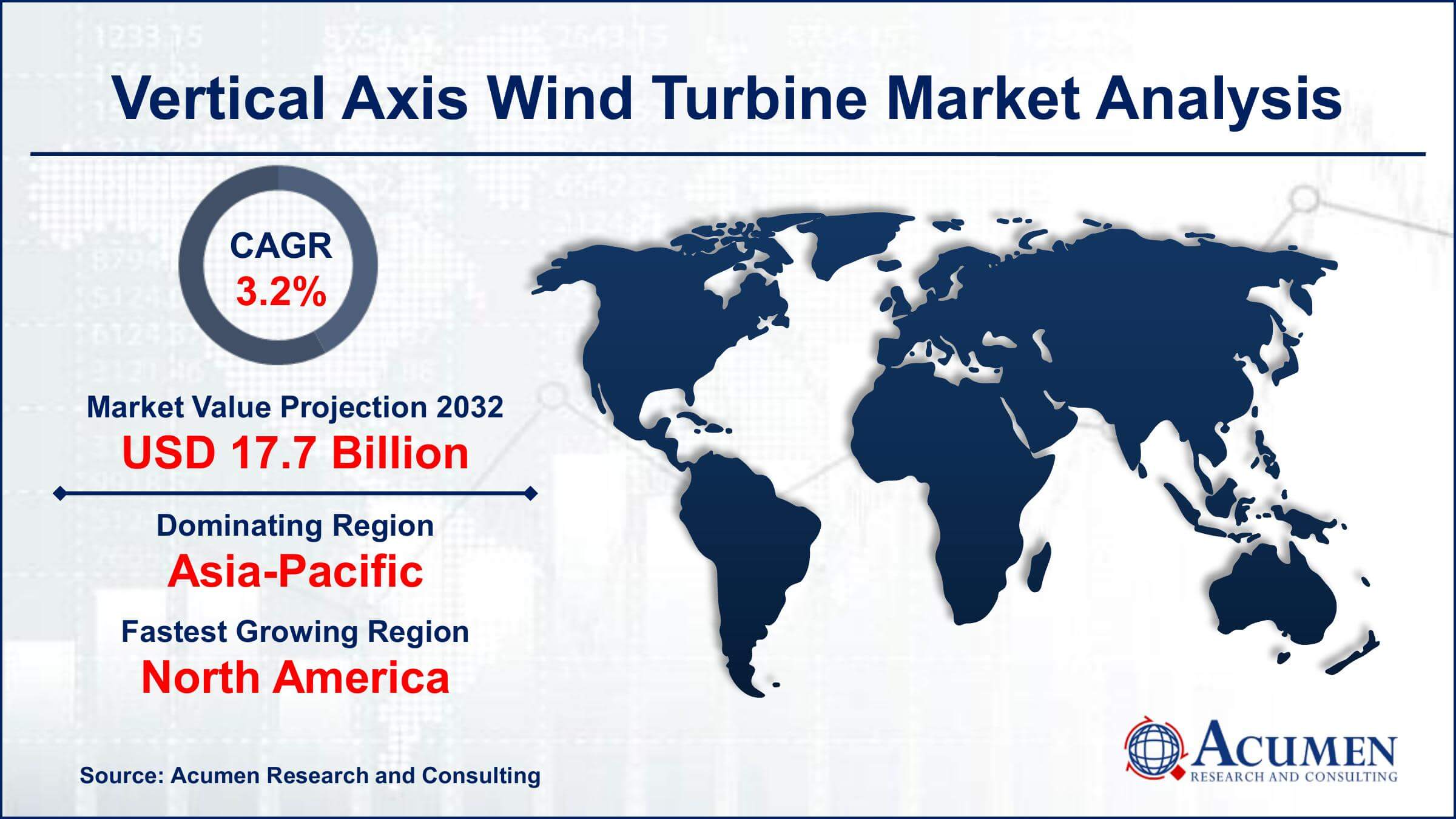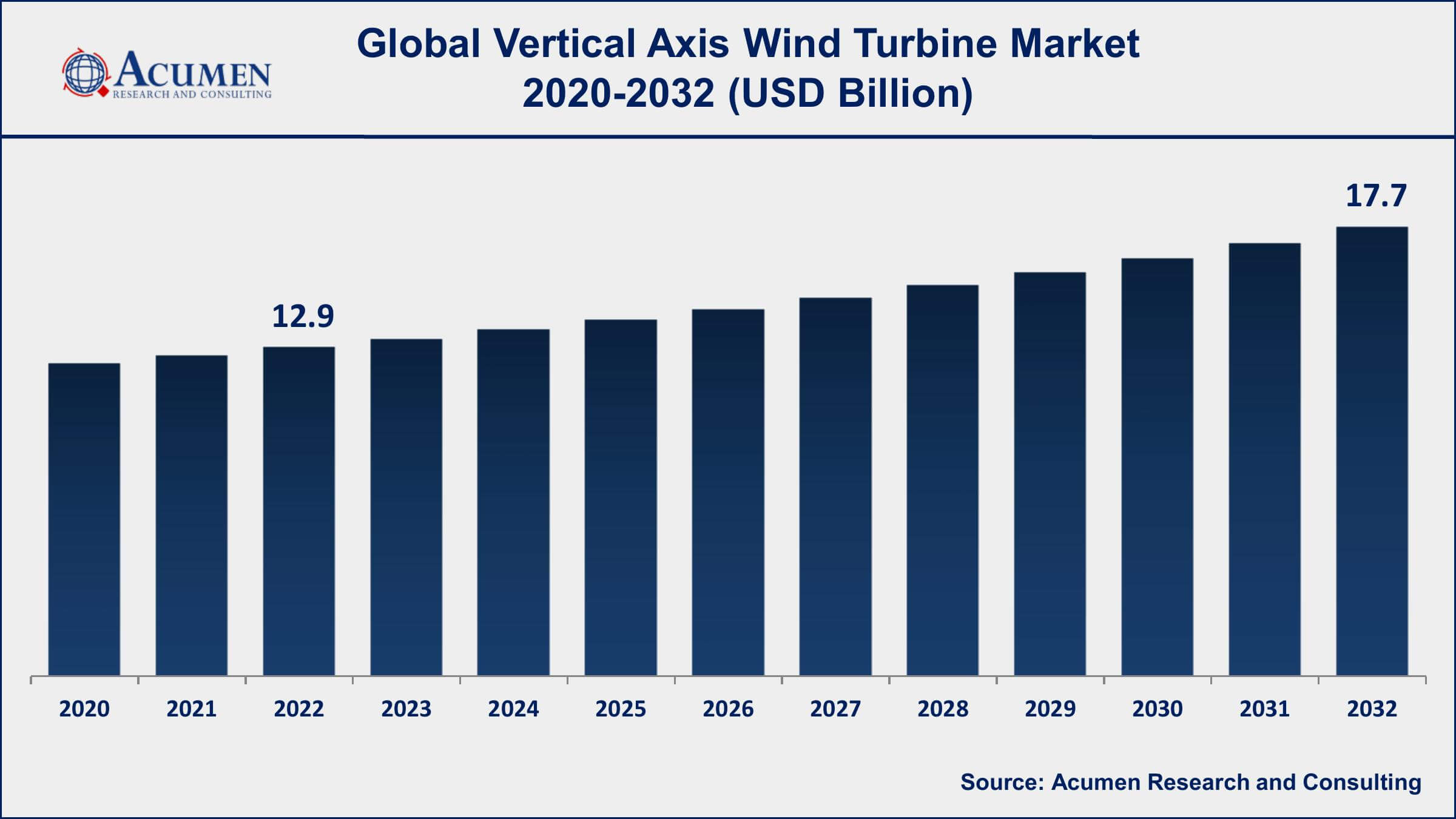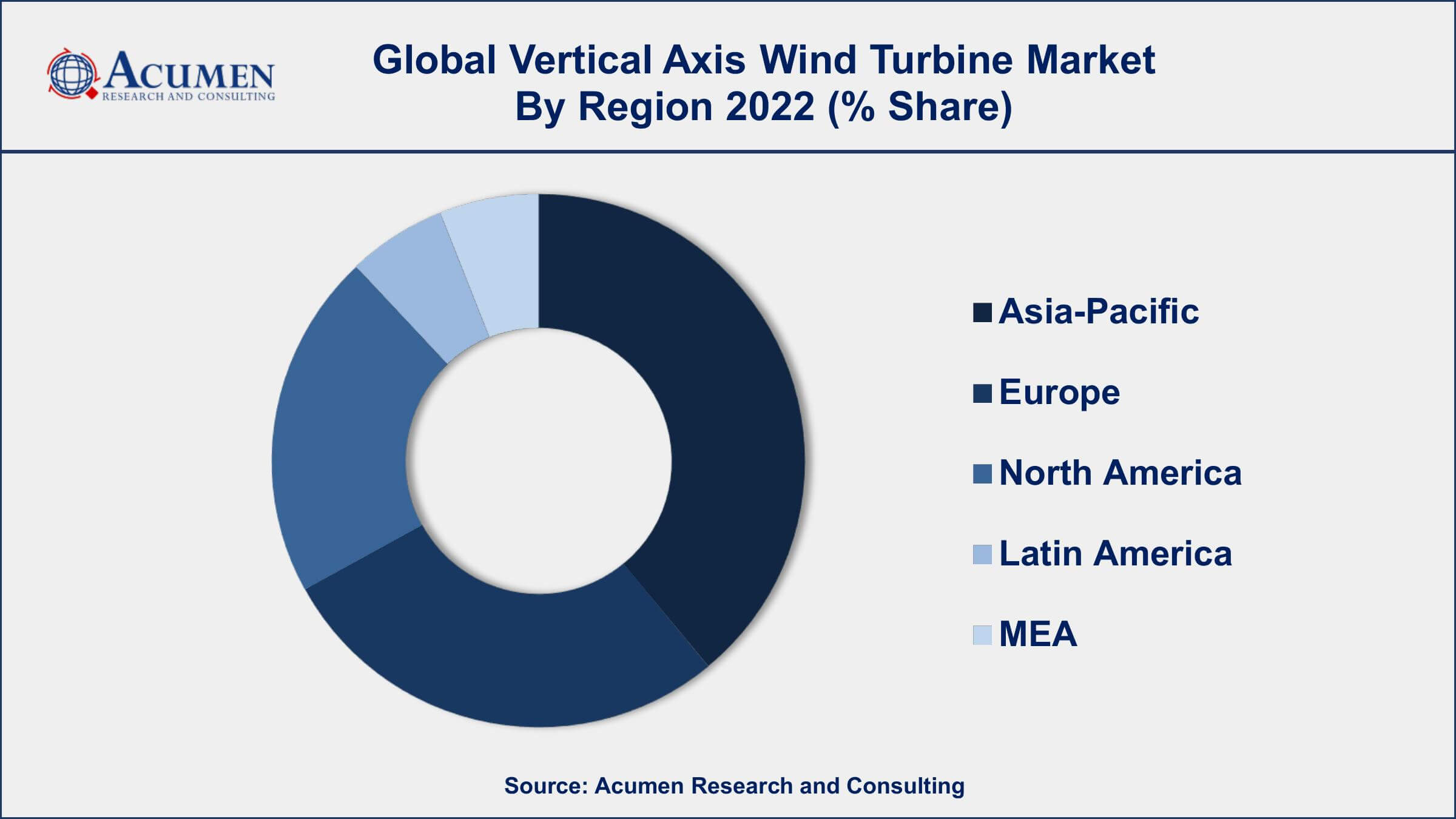June 2020
Vertical Axis Wind Turbine Market (By Type: Darrieus, Garomill, Savonious; By Application: Residential, Commercial, Industrial, Others) - Global Industry, Share, Analysis, Trends and Forecast 2023 - 2032
The Global Vertical Axis Wind Turbine (VAWT) Market Size accounted for USD 12.9 Billion in 2022 and is projected to achieve a market size of USD 17.7 Billion by 2032 growing at a CAGR of 3.2% from 2023 to 2032.

A vertical axis wind turbine (VAWT) is a type of wind turbine that has blades that rotate around a vertical axis, as opposed to a horizontal axis. This design allows for the turbine to be more compact and efficient in areas with lower wind speeds, such as urban or suburban areas. The VAWT is also less visually obtrusive than its horizontal axis counterpart, making it a more viable option for residential and commercial installations.
In recent years, the market growth for VAWTs has been significant due to its unique advantages. The growing demand for renewable energy sources, coupled with increasing concerns about climate change, has driven the adoption of wind turbines worldwide. Additionally, the VAWT's compact design makes it ideal for use in small-scale applications, such as residential homes and small businesses.

| Market | Vertical Axis Wind Turbine Market |
| Vertical Axis Wind Turbine Market Size 2022 | USD 12.9 Billion |
| Vertical Axis Wind Turbine Market Forecast 2032 | USD 17.7 Billion |
| Vertical Axis Wind Turbine Market CAGR During 2023 - 2032 | 3.2% |
| Vertical Axis Wind Turbine Market Analysis Period | 2020 - 2032 |
| Vertical Axis Wind Turbine Market Base Year | 2022 |
| Vertical Axis Wind Turbine Market Forecast Data | 2023 - 2032 |
| Segments Covered | By Type, By Application, And By Geography |
| Regional Scope | North America, Europe, Asia Pacific, Latin America, and Middle East & Africa |
| Key Companies Profiled | Urban Green Energy (UGE), Northern Power Systems, Aerovironment, Envergate Energy AG, Vortex Bladeless, Arborwind, Windspire Energy, SAWT Energy, Magenn Power, Quietrevolution, Helix Wind, and Oy Windside Production Ltd. |
| Report Coverage |
Market Trends, Drivers, Restraints, Competitive Analysis, Player Profiling, Covid-19 Analysis, Regulation Analysis |
The vertical axis wind turbine (VAWT) market is driven by several factors, including increasing demand for renewable energy sources, government initiatives to promote clean energy, and the need for decentralized power generation. With the increasing focus on reducing carbon emissions and combating climate change, there is a growing need for clean and sustainable energy sources, which has led to the increased adoption of wind turbines.
However, the high initial cost of installation and maintenance of VAWTs can act as a restraint to market growth. Additionally, the efficiency of VAWTs is lower than that of horizontal axis wind turbines (HAWTs), which can limit their application in large-scale power generation projects. Furthermore, the availability of suitable wind speeds can also impact the installation and usage of VAWTs.
Despite these challenges, the VAWT market presents several opportunities for growth. The increasing demand for clean energy and the rising focus on reducing carbon emissions has opened up new markets for VAWTs, particularly in urban and suburban areas. Advancements in technology, such as the use of new materials and the development of innovative designs, can also help improve efficiency and reduce the cost of VAWTs, making them more competitive in the market. Moreover, the growing popularity of small-scale power generation and off-grid solutions can also present significant opportunities for VAWTs in the future.
The global vertical axis wind turbine market segmentation is based on type, application, and geography.
In terms of types, the savonious segment has seen significant growth in the vertical axis wind turbine market in recent years. The Savonius design features curved blades that rotate around a vertical axis, making it ideal for low wind speed applications. The Savonius design has several advantages, including its simplicity, reliability, and ability to generate power from the wind coming from any direction. The increasing demand for renewable energy sources, coupled with the advantages of the Savonius design, has led to its increased adoption in various applications. The Savonius VAWT is commonly used in small-scale applications, such as residential homes, off-grid cabins, and small businesses. Additionally, the Savonius VAWT can be used in urban and suburban areas, where the wind speeds are generally lower than in rural areas, making it an attractive option for these applications. Moreover, the growth of the Savonius segment in the VAWT market is expected to continue in the future, driven by the increasing focus on sustainable and clean energy sources.
According to the vertical axis wind turbine market forecast, the residential segment is expected to witness significant growth in the coming years. The residential segment includes installations of VAWTs in residential properties, such as single-family homes, apartment buildings, and condominiums. The increasing demand for clean and sustainable energy sources has led to the adoption of VAWTs in residential properties, particularly in areas with lower wind speeds. With the increasing focus on reducing carbon emissions and combating climate change, homeowners are increasingly looking for ways to reduce their carbon footprint and generate their own electricity. VAWTs offer an attractive option for homeowners, as they can be installed in small spaces and can generate electricity from low wind speeds, making them suitable for urban and suburban areas. Additionally, advancements in technology and materials are expected to improve the efficiency and reliability of VAWTs, making them an even more attractive option for residential properties.
North America
Europe
Asia-Pacific
Latin America
The Middle East & Africa

Geographically, Asia-Pacific is dominating the vertical axis wind turbine (VAWT) market due to several factors, including the increasing demand for renewable energy, government initiatives to promote clean energy, and the availability of suitable wind resources. The Asia-Pacific region is home to several emerging economies that are experiencing rapid industrialization and urbanization, which has led to a growing demand for energy. The increasing demand for energy, coupled with the need to reduce carbon emissions, has driven the adoption of renewable energy sources, including VAWTs. In addition to the demand for clean energy, the Asia-Pacific region has also implemented several government initiatives to promote renewable energy. Many countries in the region have set ambitious renewable energy targets, which has led to increased investment in the sector. Moreover, the Asia-Pacific region has abundant wind resources, making it an attractive location for wind energy projects, including VAWTs.
Some of the top vertical axis wind turbine market companies offered in the professional report include Urban Green Energy (UGE), Northern Power Systems, Aerovironment, Envergate Energy AG, Vortex Bladeless, Arborwind, Windspire Energy, SAWT Energy, Magenn Power, Quietrevolution, Helix Wind, and Oy Windside Production Ltd.
Looking for discounts, bulk pricing, or custom solutions? Contact us today at sales@acumenresearchandconsulting.com
June 2020
February 2024
September 2020
April 2024